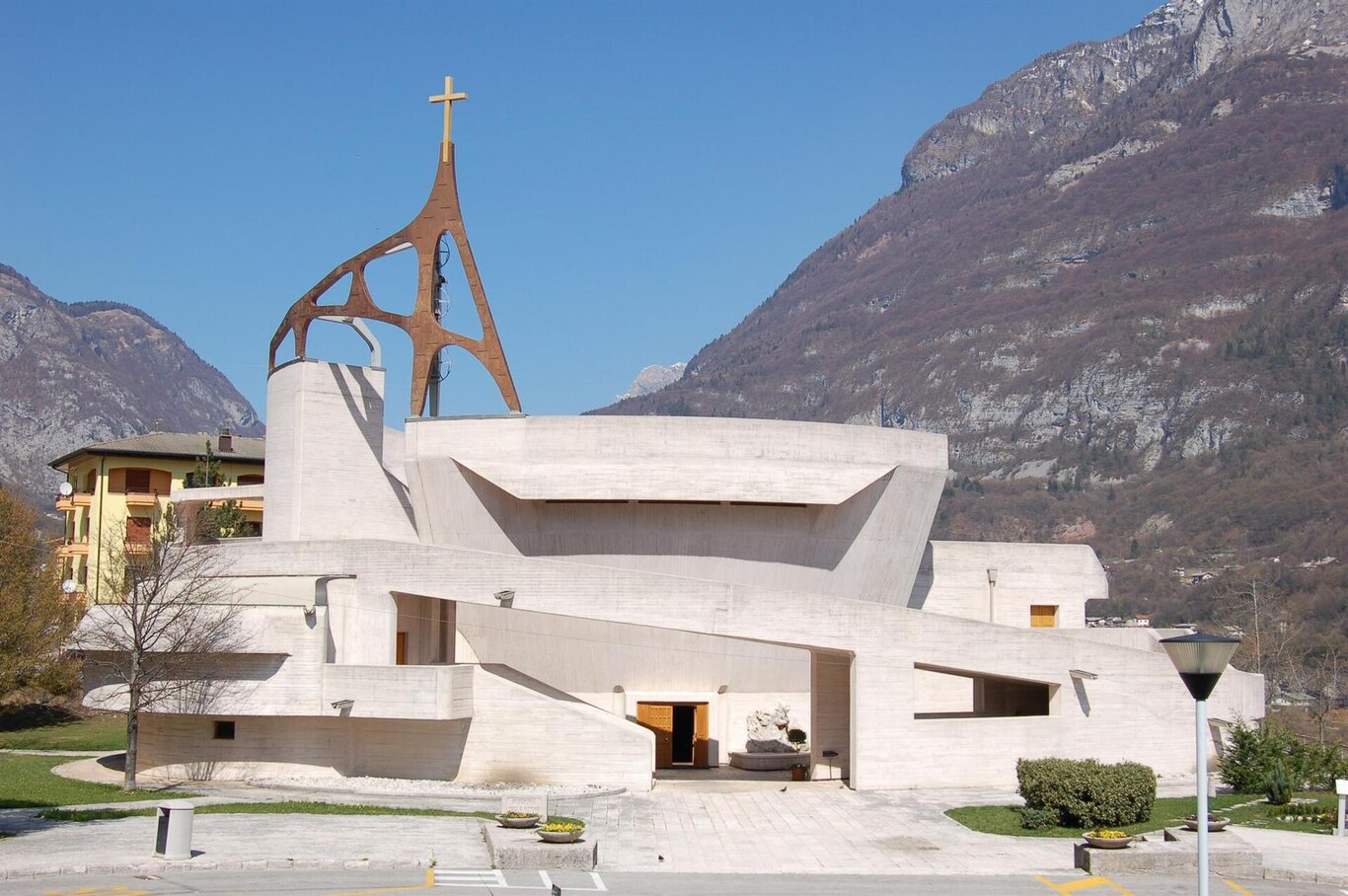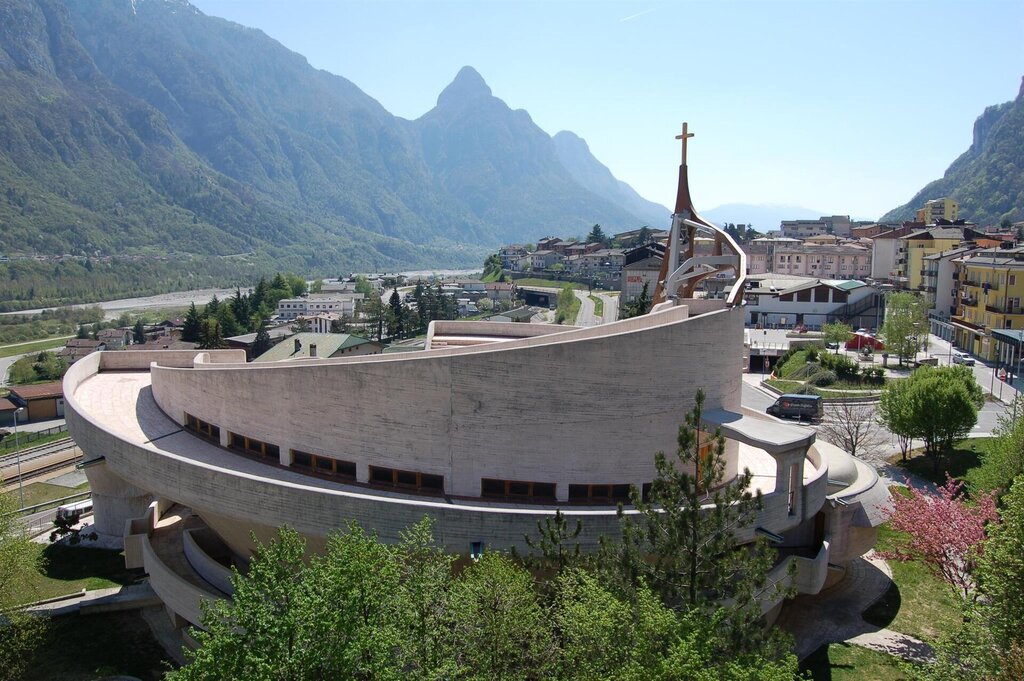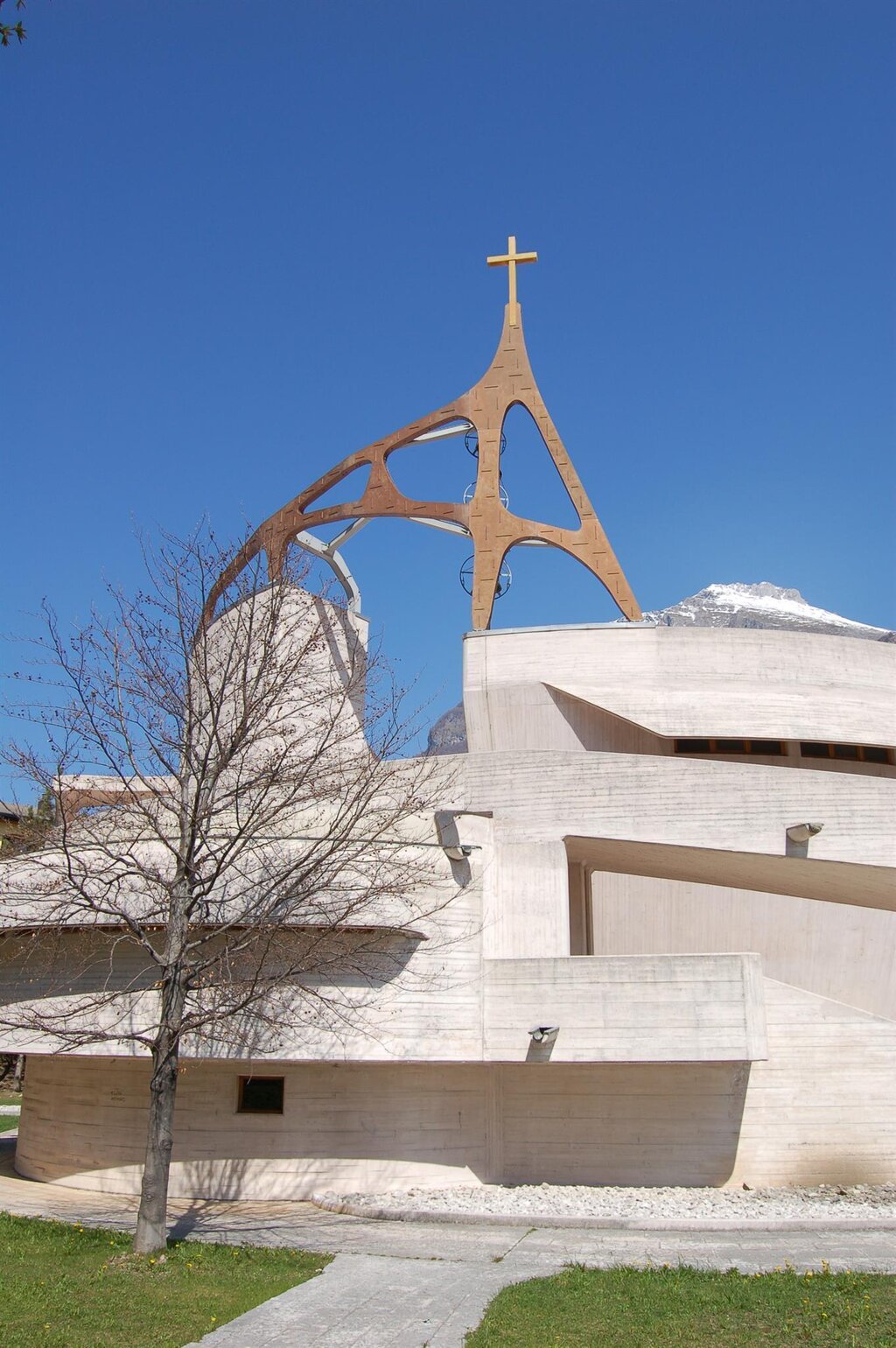Located in the center of Longarone, in Piazza J. Tasso, it was built after the Vajont Tragedy, on the site where the previous church stood, consecrated and inaugurated on October 9, 1983, on the twentieth anniversary of the tragedy, dedicated to the memory of the Victims of Vajont. Designed by the Florentine architect Giovanni Michelucci, it is the symbol of the new Longarone, and there is a memorial for the Victims and a small annexed museum called "Museo Pietre Vive," which collects the few ruins of the original church recovered from the rubble.
The new church officially took its first step on February 5, 1965, when the Minister of Public Works entrusted the reconstruction of all public buildings to the Institute for the Development of Social Housing. The desire for a new temple actually predates this, as just a few months after the disaster, a prefabricated church was blessed, built on the plain in front of the town hall and used from Christmas of that year, even though the work was not yet completed.
With the backing of funding, the ISES consulted several architects, including G. Michelucci and A. Gurekian (who had already been assigned to design the Parish of Longarone), to draft a project for the new Church. On November 15, 1966, the judging committee declared Michelucci the winner, who attempted multiple times to step aside to alleviate the opposition from parishioners, who were against his appointment, but in the end, he was once again captivated by the undertaking.
In 1975, the Ferraro company of Padua won the contract and, with almost entirely local labor, completed the work between October '75 and November '77. In April 1981, the building was handed over to the Parish with the essential signs of the Christian Church, altar and baptismal font, while the tabernacle, pulpit, bell tower, and organ would be finished in subsequent years.



